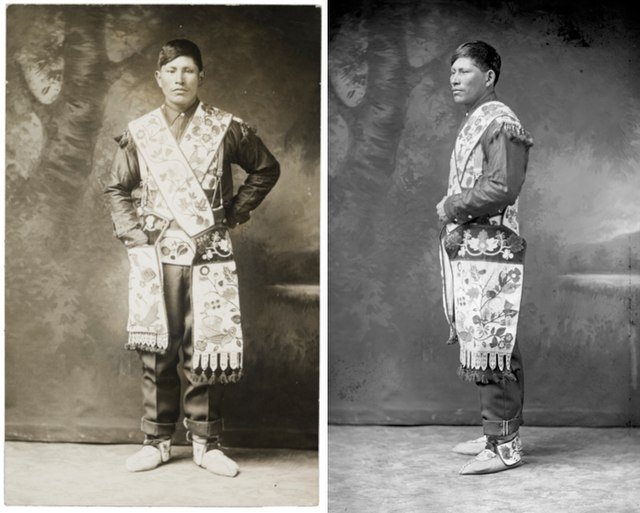Top Qs
Timeline
Chat
Perspective
Bandolier bag
From Wikipedia, the free encyclopedia
Remove ads
A bandolier bag is a Native American shoulder pouch, often beaded. Early examples were made from pelts, twined fabrics, or hide, but beginning in the fur trade era, Native American women stitched bags of imported wool broadcloth, lined with cotton calico and often edged with silk ribbons.

Remove ads
Name
The bags are named for bandoliers or the cloths carrying gunpowder that soldiers wore from the 16th to early 20th centuries. They are also called shot pouches or simply shoulder bags.
In Ojibwemowin, or the Ojibwe language, bandolier bags are called gashkibidaagan. The Ojibwe name comes from the word parts, gashk-, meaning "enclosed, attached together" and -bid, "tie it."[citation needed]
The English word bandolier comes from the French word bandouliere meaning "shoulder belt" and traces back to the Spanish bandoera the diminutive of banda or "sash."[citation needed]
Remove ads
Use
A bandolier bag may be worn either across the shoulder to the side or in front like an apron.[1][2] Men wore them and placed valuables such as tobacco, pipes, medicine, or flint for starting fires.
Gallery
- Loom-beaded bandolier bag attributed to Winnebago people, c. 1880s, collection of the Metropolitan Museum of Art
- Woodlands artist, Bandolier Bag, ca. 1840, wool, cotton, and glass beads, Portland Art Museum.
References
External links
Wikiwand - on
Seamless Wikipedia browsing. On steroids.
Remove ads



